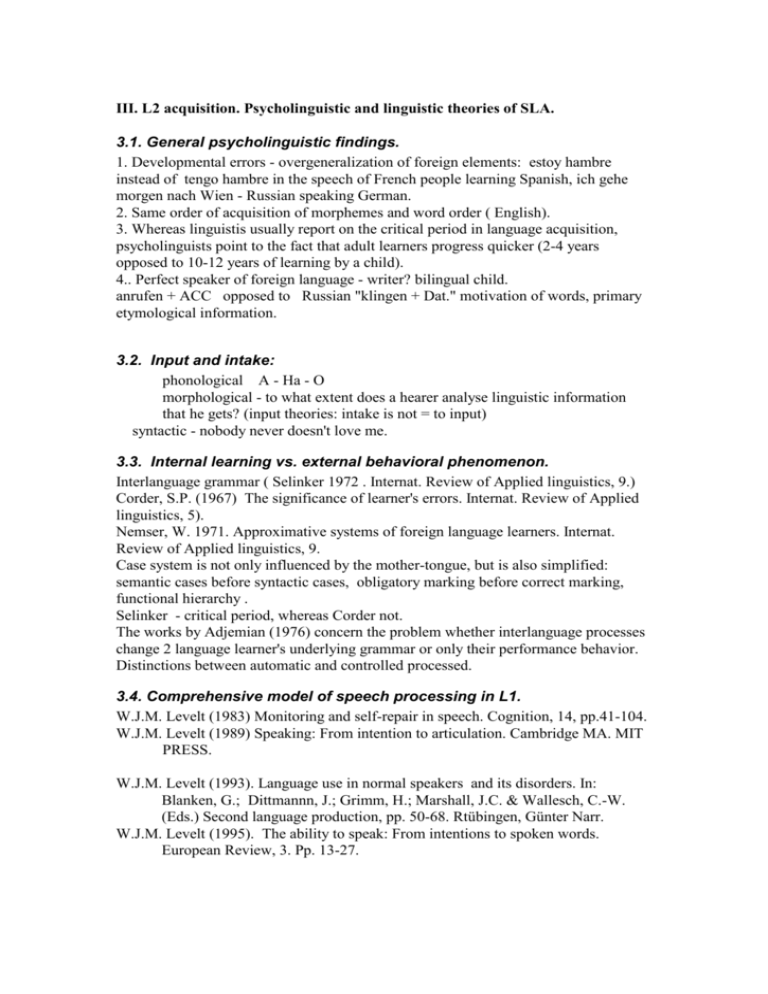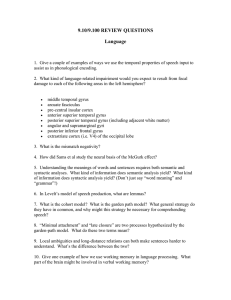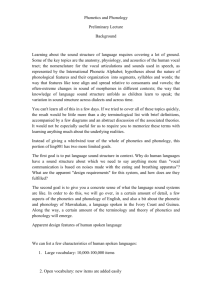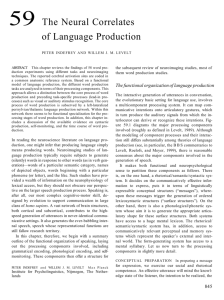III. L2 acquisition. Psycholinguistic and linguistic theories of SLA.
advertisement

III. L2 acquisition. Psycholinguistic and linguistic theories of SLA. 3.1. General psycholinguistic findings. 1. Developmental errors - overgeneralization of foreign elements: estoy hambre instead of tengo hambre in the speech of French people learning Spanish, ich gehe morgen nach Wien - Russian speaking German. 2. Same order of acquisition of morphemes and word order ( English). 3. Whereas linguistis usually report on the critical period in language acquisition, psycholinguists point to the fact that adult learners progress quicker (2-4 years opposed to 10-12 years of learning by a child). 4.. Perfect speaker of foreign language - writer? bilingual child. anrufen + ACC opposed to Russian "klingen + Dat." motivation of words, primary etymological information. 3.2. Input and intake: phonological A - Ha - O morphological - to what extent does a hearer analyse linguistic information that he gets? (input theories: intake is not = to input) syntactic - nobody never doesn't love me. 3.3. Internal learning vs. external behavioral phenomenon. Interlanguage grammar ( Selinker 1972 . Internat. Review of Applied linguistics, 9.) Corder, S.P. (1967) The significance of learner's errors. Internat. Review of Applied linguistics, 5). Nemser, W. 1971. Approximative systems of foreign language learners. Internat. Review of Applied linguistics, 9. Case system is not only influenced by the mother-tongue, but is also simplified: semantic cases before syntactic cases, obligatory marking before correct marking, functional hierarchy . Selinker - critical period, whereas Corder not. The works by Adjemian (1976) concern the problem whether interlanguage processes change 2 language learner's underlying grammar or only their performance behavior. Distinctions between automatic and controlled processed. 3.4. Comprehensive model of speech processing in L1. W.J.M. Levelt (1983) Monitoring and self-repair in speech. Cognition, 14, pp.41-104. W.J.M. Levelt (1989) Speaking: From intention to articulation. Cambridge MA. MIT PRESS. W.J.M. Levelt (1993). Language use in normal speakers and its disorders. In: Blanken, G.; Dittmannn, J.; Grimm, H.; Marshall, J.C. & Wallesch, C.-W. (Eds.) Second language production, pp. 50-68. Rtübingen, Günter Narr. W.J.M. Levelt (1995). The ability to speak: From intentions to spoken words. European Review, 3. Pp. 13-27. Conceptualizer Communicative intention message generation preverbal message Formulator grammatical encoding inferred intention Monitoring discourse model situational & encyclopedic knowledge Lexicon lemmas lexemes surface structure phonological encoding discourse processing parsed speech/ derived message Parser grammatical decoding lexical-prosodic representation syllabary phonological decoding & lexical selection phonetic/articulatory plan (intern speech) phonetic representation Articulator Acoustic-phonetic processor overt speech --------------- speech 3.5. Language as problem-solving mechanism. Dörnyei, Z. & Kormos, J. 1998. Problem-solving mechanisms in L2 communication. Studies in second language acquisition (SSLA) v.20, N 3, Cambr. Univ. Press. Pp.349-385. Problem type Relevant phase of speech Problem-solving production mechanisms Ressource deficit planning & encoding the Lexical problem-solving preverbal message mechanisms Grammatical problemsolving mechanisms Phonological problemsolving mechanisms Processing time pressure Perceived deficiancy in one’s own language output Perceived deficiency in the interlocutor’s performance planning & encoding the preverbal message Monitoring the phonetic plan and the articulated speech Post-articulatory monitoring Stalling mechanisms Self-corrections Check questions Meaning-negotiation mechanisms











